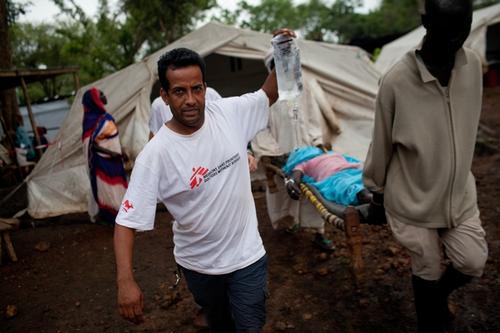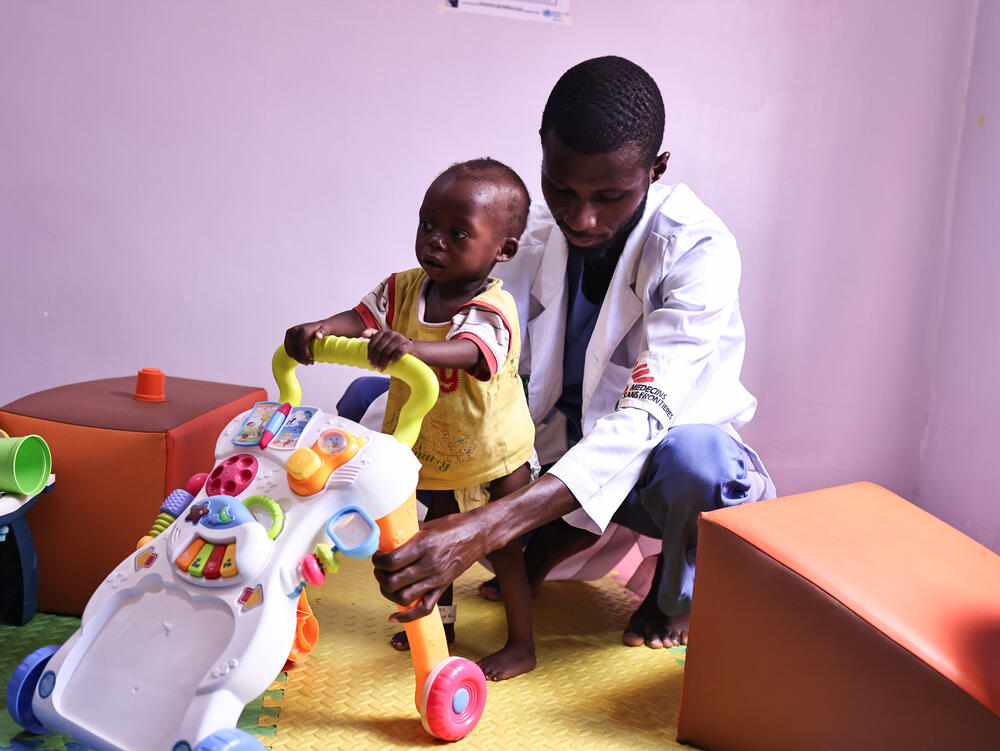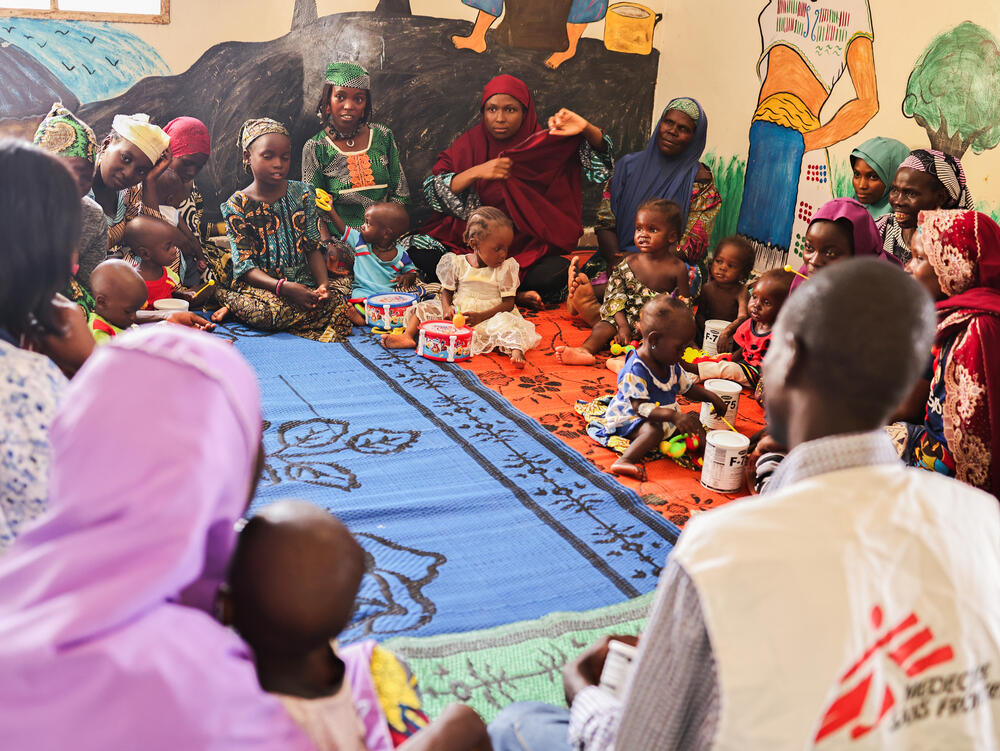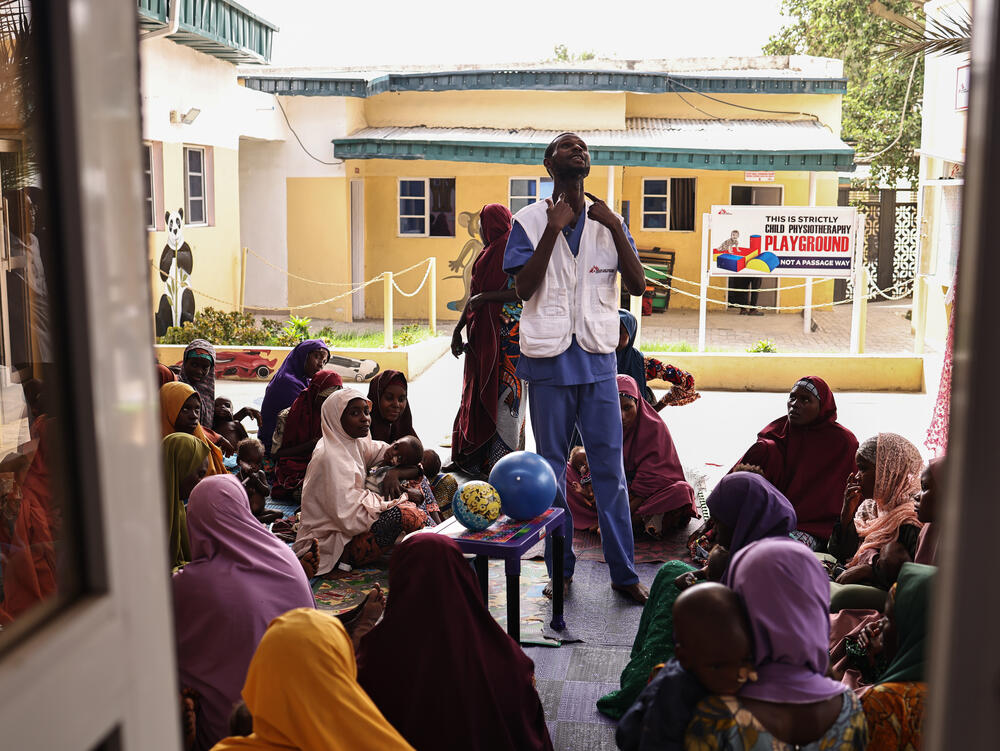Nigeria: Learning to walk after malnutrition
In 2024, the MSF team at Unguwa Uku Hospital in Kano, Nigeria, admitted 46,304 children for malnutrition. Most can be treated at home with therapeutic food, whilst those with complications need more intensive care in the hospital.
However, for many children, recovery means more than regaining a healthy weight. Paediatric physiotherapist Mubarak Mutawakkil is part of an MSF Foundation pilot project that’s helping children overcome the long-term consequences of malnutrition.
"By three months old, most children can grasp a toy and hold their heads up. At six months, they can typically roll onto their tummies. By the time they reach eight months, children have typically started to crawl.
We call these ‘developmental milestones’. And while every child is different, these milestones allow us to understand how each child is progressing compared to average.
I met Isah* when he was two and a half (31 months to be exact). Isah was severely malnourished, and had never walked, something we would expect an 18-month-old to do. That was concerning enough, but Sadiya*, his mother, told us that he had also stopped crawling.
Isah was regressing. This is a clear red flag.
Isah had just arrived at the malnutrition unit at Unguwa Uku Hospital, where I work as a paediatric physiotherapist.
I’ve worked in paediatrics for years, but never in a specialist malnutrition environment until now. When I first started I was shocked. I’m from Kano myself, and while I knew that malnutrition exists in rural areas of our state, I didn’t realise how widespread it is, or the dire consequences it’s having.

Help us prepare for the next emergency
Severe acute malnutrition affects the body in different ways. It stunts growth, causes muscle wasting, and in some cases restricted joint mobility and painful skin lesions.
Without the energy to move or play, children become physically weaker, and they don’t get the stimulation they need to learn. They stop progressing through the milestones, or start to regress.
Without the right care, these developmental delays can have lasting physical and cognitive impacts, leaving children with long-term disabilities.
Starting out
With Isah’s nutrition and medication being taken care of by the team, it was time for our first physiotherapy session…
Isah was crying. The hospital is already an unfamiliar environment, but all the bright colours and modern toys in the physiotherapy area can be scary for young patients who aren’t used to them.
Children learn best when they are calm. So for the first visit, we didn’t do any planned exercises, we just played. We did some singing. Having a malnourished child is really hard for parents, so I made sure to show Sadiya how she could join in – I wanted them both to feel relaxed.
In our second session, Isah clapped when he saw me! This was a good sign, so we started work on our next target: revitalising his crawling abilities. Luckily, Isah really liked the therapeutic milk we have on the unit, which is specially formulated for children with severe acute malnutrition. We used it to encourage different types of movement, building up his muscles. Quite rapidly, Isah was crawling towards the milk.
Sadiya and I were both really pleased. However, Isah had crawled before, so this wasn’t a new skill. He had never walked, so that was going to be more of a challenge.
We worked on giving Isah the strength and confidence to pull himself up to standing. Having achieved that, he started “cruising”, holding on to the furniture to get around on his feet. But we needed to get him walking unaided.
Achieving milestones
I still remember the day he took his first steps.
We were working on his pelvic rotation. I had two little tables set up at a 45-degree angle, so that if Isah was holding on to one, he would have to turn to grab the other.
We repeated the exercise, gradually increasing the distance between the tables. Then suddenly Isah stood straight, not holding on to anything.
“Wait, can you move forward?” I asked him, surprised. Isah looked like he was about to cry. I asked Sadiya to come round in front of him. And Isah took one step, then another, and then he fell.
I looked to Sadiya, ready to reassure her. We were on soft mats so I knew Isah wasn’t hurt, but I thought his mum might panic seeing him fall like that. But Sadiya’s face was filled with excitement. She wasn’t worried about the fall. He had walked!
From there Isah continued to make great progress. At his final assessment, he could walk 7.5 metres without falling. On the day he was due to be discharged from the hospital, Sadiya volunteered to speak to the other mums about her experience. The last thing she told them really captivated me. She said “I brought a malnourished child to this facility to cure his malnutrition. But in the end I am going home with a nourished child and a straight [upright] child.”
I had tears in my eyes. This experience and many experiences like it are what motivate me in my work. We often hear from families that when a child stops walking for months, they assume there is a permanent disability and nothing can be done. It’s devastating for them, but it also means children don’t get the help they need.
Mothers like Sadiya are essential to their children’s recovery. I might only do five sessions with a child, but a brilliant mother is with their child every day. So if care-givers are demoralised, anxious or hopeless, we try to be their hope.
As well as doing specific exercises with the children, we try to get alongside the parents, support them, give them the tools, so we can say “actually, there is a way. This child has a chance. If you motivate him and play with him and stimulate him, he will respond and he will achieve his milestones.”"
*Names changed
MSF in Nigeria
Médecins Sans Frontières/Doctors Without Borders (MSF) has been responding to disease outbreaks and emergency health needs in Nigeria for many years, focusing on maternal and paediatric healthcare throughout the country.
We have scaled up our activities in the north, particularly around treating malnutrition, as huge numbers of people caught up in the conflict depend on aid to survive. In 2022 we significantly expanded our malnutrition activities and in some regions triple our bed capacity to adjust for a full-scale emergency.



